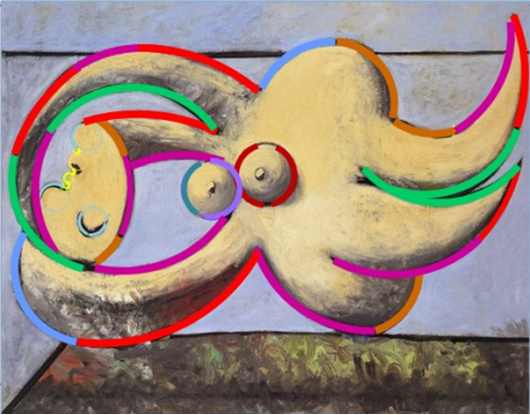The geometrical proportion known as GoldenSection has for centuries been regarded as such a key to the mystery of art, and so universal is its application, not only in art but also in nature, that it has at times been treated with religious venaration.
Herbert Read (The meaning of art)
The problem is that even if the golden section is used for a hidden structure, the effect is indistinguishable from integer ratio.
I have shown in
my blog [Mondrian did not use golden ratio but integer ratio for proportion]
that even Mondrian who is most associated with Golden Section used simple grid
for composition.
The geometrical laws of art must be in every work.
All artworks have a simple natural number relationship.
Art can be explained scientifically if the smallest unit is a geometrical element that can be easily counted visually.
Flute is an
instrument that can be found anywhere in the world, and we can listen to each
sound separately.
The musical scale is naturally
devised, unified by the equal temperament, and finally theorized by the pure
temperament.The curved lines in a painting can be seen as a series of several arcs.
The arcs can be extended to circles.
Since a limited number of circles are used for one work, it can be called a scale.
This time I pick up a work, in
which the scale is consciously used.
“Pebble Series” by
Vasalery is a series of masterpieces as pure abstract art.Dozens of them now can be found if we bother to search online,
Vazalery [Pebble series]
vaz
Vasalery [Pebble series 2]
Though the design is asymetric the sense of balance is extremly good.
The trick must be due to the hidden structure.
Looking at these
concentric circle models, we can see that the painter had decided the size of
the circles in advance.
A loop shape is counted as one.
If two or more shapes overlap, it becomes a network, and strings and dots are counted.
The number of concave and convex in a loops is the same and countable.
By quantifying the quality of the shape in this way, all the works can be classified with distinct differences in shape.
The complexity of
the structural devices seems to explain why some shapes are very interesting.
Though there are countless artworks,
a sensor called taste judgement distinguishes only a small number of masterpieces.
.
































































